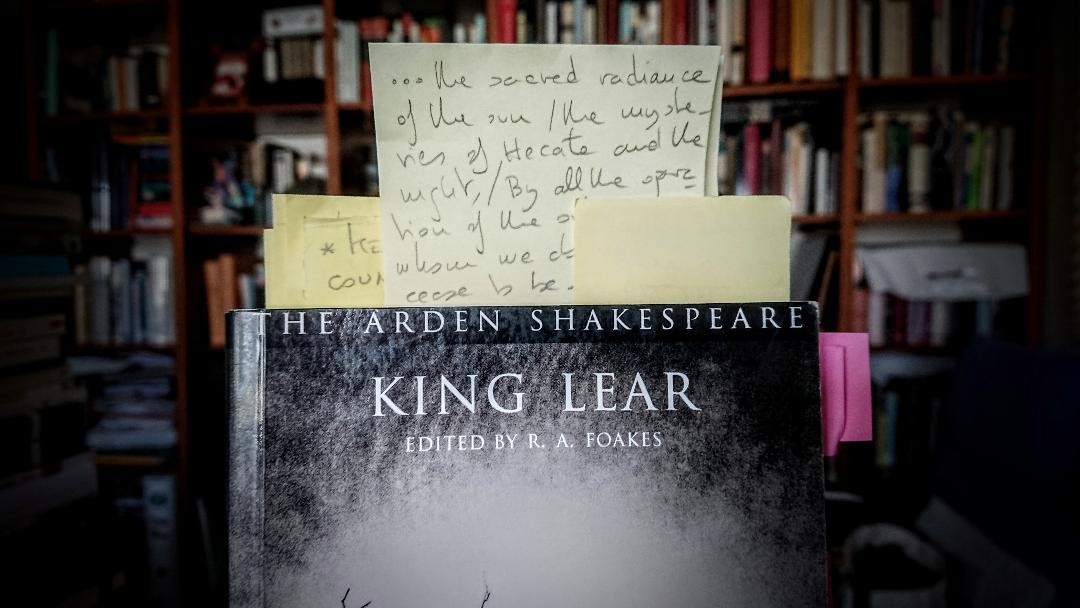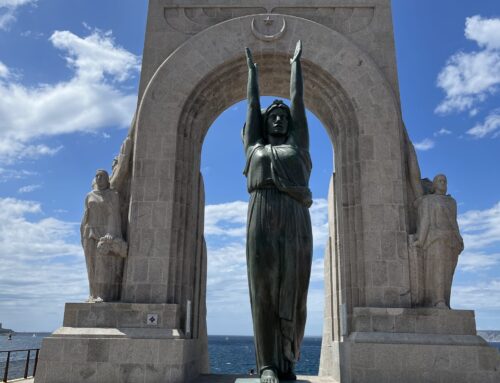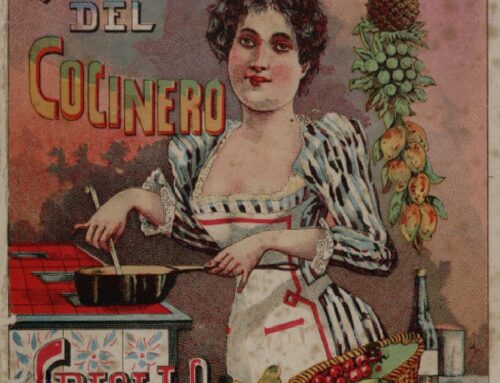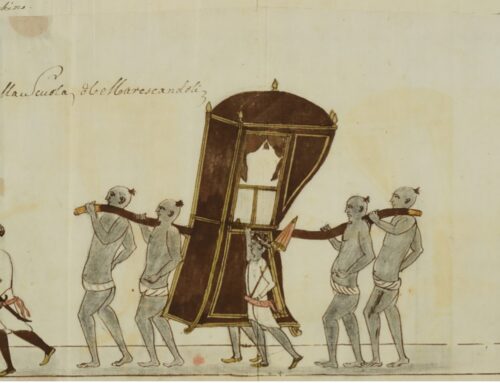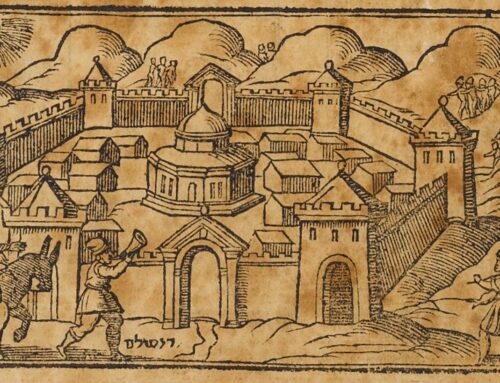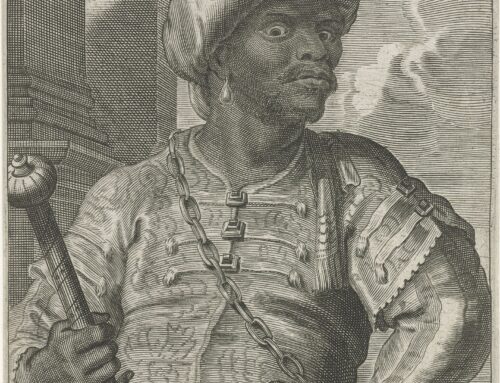EDMUND: If the matter of this paper be certain, you have mighty business in hand
CORNWALL: True or false, it hath made thee Earl of Gloucester.
King Lear, 3.5.15-18
(All quotations are from the Arden Shakespeare edition, London, 2016)
This exchange in the third act of Shakespeare’s King Lear reveals the role of paper as a trope that denotes the messages recorded in this medium alongside their performative power. Edmund, the arch-villain in the play, plots to betray his father, Gloucester, and his half-brother, Edgar, for the sake of self-promotion at court. He does so by weaving an intricate web of letters that manipulate the opinions and views of powerful political agents at court. It is no less significant that in his exchange with Cornwall, the latter claims that the consequences of the “matter of this paper” will take effect irrespective of their veracity. That paper will, indeed, will bring about Gloucester’s downfall and elevate Edmund to his title instead (1.2.1-182, in particular 1.2.23-61).
Paper matters of this sort do not just constitute the semiotic infrastructure for Edmund’s strategy: they also drive the overall plot of a play which rests upon the recurrent exchange of messages. Some of the key issues in King Lear involve besides that eminently Shakespearean obsession: the troubled relation between words and deeds, language and truth.
“To know our enemies’ minds we rip their hearts, / Their papers is more lawful”, says Edgar, Gloucester’s faithful son, to his father in Act 4 (4.6.255-256), as they prepare to engage in combat with their opponents. Here paper appears as a semiotic repository for the conscience, intelligence and intentions of an individual (“the mind”) on a par with the trope of “the heart” as loci for knowledge and feelings. Soon after these lines, the same act sees the notion of paper as a powerful weapon that can be used to strike:
Here in the sands
Thee I’ll rake up, the post unsanctified
Of murderous lechers; and in the mature time,
With this ungracious paper strike the sight
Of the death-practised duke.
(4.6.268-272, italics are mine)
Kent, another of Lear’s loyal courtiers, gets a letter from Cordelia in the second act, which reveals that the King’s loving and faithful daughter (who has fallen out of favour with him for her refusal to falsely flatter him) has been informed of the iniquities inflicted by her two duplicitous sisters, Regan and Goneril, upon their father, and of his utter distress on the verge of madness (2.2.158-171). Another letter frames the moment in act 3 immediately before Cornwall plucks out Gloucester’s eyes, one of the consequences of the letter sent by his bastard son Edmund—i.e. the paper whose matter also effectively turned the traitorous Edmund into the Earl of Gloucester (3.7.1-13). Top 10 onlayn kazino saytları
Over the course of the tragedy the circulation of letters and paper notes goes in crescendo, leading the plot to a series of dramatic denouements in the last act. A paper note carries the death sentence for Cordelia and Lear, and another one, further amplified by a herald, portends Edmund’s final punishment by summoning Edgar in arms to take just revenge on his half-brother for the wrongs he has inflicted on their father (5.3.27-40; 5.3.107-115). And yet another paper note brings about Goneril’s fall, who tries to tear it in a fruitless attempt to thwart its consequences:
ALBANY:
Shut your mouth, dame,
Or with this paper shall I stop it.
[to Edmund] Hold, sir,
Thou worse than any name, read thine own evil.
[To Goneril] Nay, no tearing, lady; I perceive you know it.
GONERIL:
Say if I do, the laws are mine, not thine.
Who can arraign me for’t?
ALBANY:
Most monstrous! O!
[To Edmund] Knowst thou this paper?
EDMUND
Ask me not what I know.
(5.3.152-158)
The materiality and the performative function of other means for the registration and the iconic representation of information feature in the map used by Lear in the first act (1.1.35-40, 1.1.63-67). Although the text does not specify, common practice suggests this map would be drawn on parchment, which used to be the medium of choice for documents of this sort, owing to its durability, as opposed to the more fragile and perishable nature of paper. Besides maps, parchment was also used to record texts that had an exceptional political value, such as bills, royal proclamations, or diplomatic treaties. In this public formal occasion at court, Lear uses the map to perform and proclaim the division of his kingdom among his three daughters. This is the decision that triggers the plot, and the parchment where the map is registered constitutes the material foundation that the monarch uses, in his own ominous words, to “express my darker purpose” (1.1.35).
Hard or heavy media, like parchment, wood, clay, arras, or marble, contrast with paper not just in material resistance: their semiotic properties are also less dynamic. This led the historian of communication Harold Innis to suggest that paper-based empires tend to be expansive in spatial terms in contrast with the temporal durability of those which rely on heavy media. The latter also tend to be more expensive to produce, difficult to transport, and, as far as secrecy is concerned, not as easy to conceal as information recorded in a piece of paper. The use of a parchment-based map in a public official proclamation, at the very onset of King Lear, and the letters, which contribute to unfold and push the plot fast towards its tragic climax, illustrate the semiotic and performative power of different sorts of media, and how it relates to their material natures.
The transition from parchment to paper towards the end of the Middle Ages marks the onset of the so-called paper revolution, and thus the beginning of the chronological scope of our work group, “Paper in Motion”. We intend to bring to the foreground the manifold uses of paper-based records and documents, a phenomenon that has been frequently overshadowed by the invention of print. The medium of paper in combination with the technology of print functioned as a powerful symbiotic alliance that brought about a number of important new developments, such as their use for religious or political propaganda, for the registration and exchange of ideas, and for the emergence of a market for mass entertainment in the form of popular pamphlets and broadsides, which included forms of popular poetry and prose fiction. The use of these inexpensive and inherently dynamic formats also led to the creation of domestic and international news networks. These markets for printed products frequently overlapped in complex and interesting ways with other new forms of popular entertainment such as the commercial stage, the context within which Shakespeare developed his literary production.
King Lear also exemplifies the joint role of paper and print during this early age of mass entertainment, as it also underlines the fundamental role of paper-based, manuscript, administrative documents when it came to the control and censorship of artistic and intellectual production. Before its publication in print King Lear had already materialized as a manuscript record in the Stationers’ Register. This was an unavoidable administrative process for any legitimate publication in England. The Stationers’ Company was a trade and craft organization which regulated the publication of titles and protected the interests of its members: no title could be printed and circulated if it had not been approved first by the senior administrators of the Company and then officially recorded in its Register. In other words, the material production of any title in any sort of printed format was facilitated and controlled by means of a network of paper-based registers and documents, which in the case of plays for the commercial stage included not just the Stationers’ Register, on its transition to legitimate publication, but also the so-called manuscript “foul papers” used by actors in rehearsals. These “foul papers” were in turn used by the publishers to cash in on the most popular plays, some of which were printed in (not infrequently unauthorized) affordable editions, the quartos—a small format which, unlike a book, did not require a huge investment in paper, ink, binding, nor labour. Actually, most of those plays which did not find their way from the manuscript “foul paper” format into these printed quartos have been lost forever: only a small percentage of the plays actually performed on the stage between the end of the sixteenth and the early decades of the seventeenth century have reached us. Only the joint intervention of paper and print, in short, in combination with the popular demand, marketability and literary prestige of these titles, have facilitated their survival.
In contrast with the quartos, which were relatively inexpensive and easy to produce in large numbers, and were consequently highly marketable at reasonably popular prices, authors were canonized for the elites of the Elizabethan or Stuart intelligentsia when they saw their work published in the expensive, luxury format of the larger and heavier folio. The production of a folio did not just require a heftier investment on the part of the printer and the publisher, which was reflected in its expensive sale price. A folio format also carried with it the symbolic authority and prestige which turned it into a signifier for a position at the top of the literary hierarchy of the period.
Shakespeare’s King Lear ran the usual cursus honorum for Elizabethan and Jacobean texts. It went first through two different quartos, the second of which was a counterfeit edition published in 1619 but which posed as the first quarto of 1608.
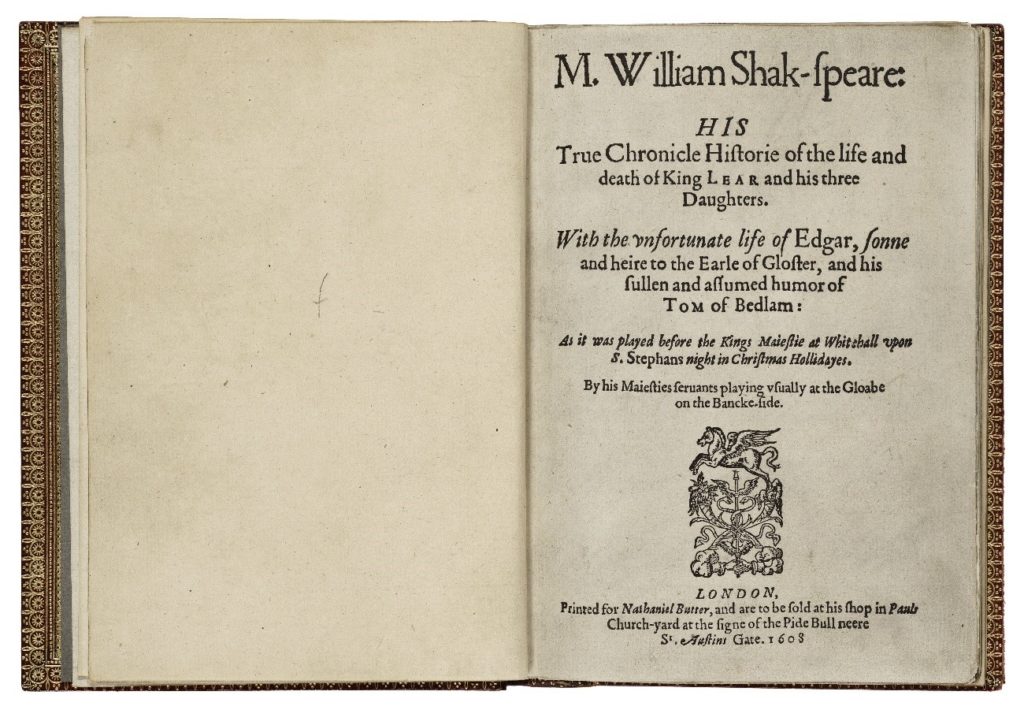
1st Quarto, 1608
[STC 22292 copy 1, A2r. Used by permission of the Folger Shakespeare Library under a Creative Commons Attribution-ShareAlike 4.0 International License]
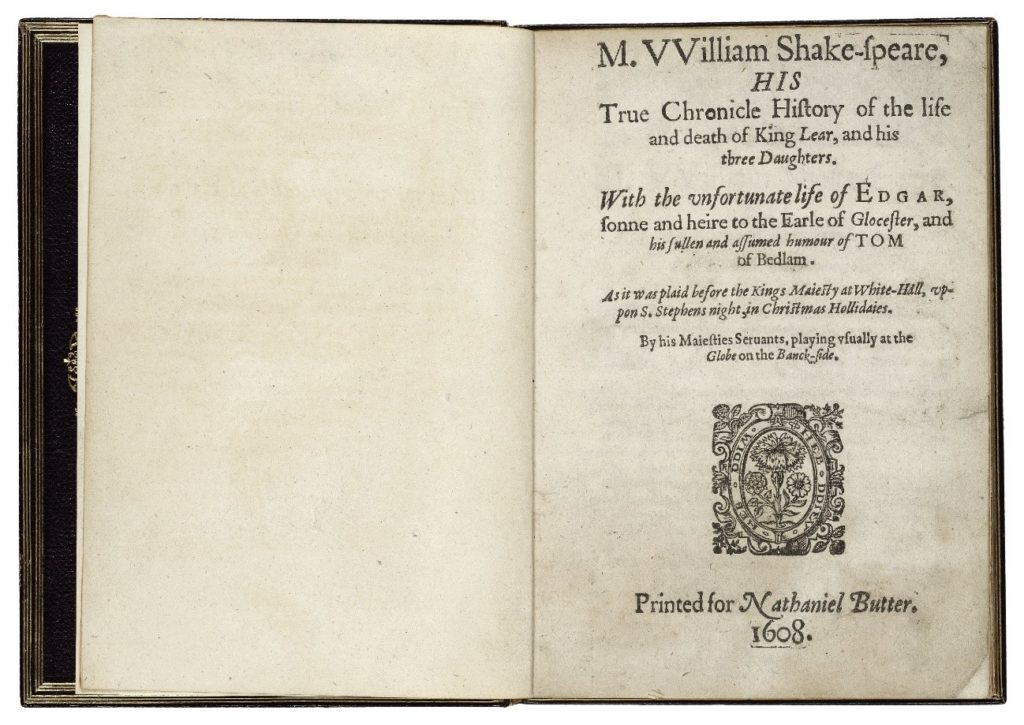
2nd Quarto 1608, [actually 1619]
[STC 22293 copy 1, A1r. Used by permission of the Folger Shakespeare Library under a Creative Commons Attribution-ShareAlike 4.0 International License]
A few years later, King Lear was canonized, alongside the status of its author, in the First Folio of 1623. The opening poem and the title page, with a large portrait of Shakespeare, all thematize some of the complex issues posed by the new modes of production and perception of representation involved in the use of paper as medium and print as technology. These included the need to certify the reliability and veracity of the texts and the images recorded, which in turn denote the anxiety generated by the development of new media and technologies that facilitated their swift reproduction and distribution in unprecedentedly large amounts of copies. Hence the need for institutions like the Stationers’ Register, and the development of iconic and textual strategies for the legitimation of the printed artefacts that were set in circulation. The title page explicitly emphasizes the authenticity of the text, proclaiming that it is based on the “True Originall Copies”—in contrast with the frequently illicit quartos that were hastily put together by publishers eager for easy and fast profit from the “foul papers” used by the actors. These imperfect and therefore not totally reliable working copies recorded the fluid state of the text during the stages of rehearsal and production of a play. They frequently abounded in hardly legible annotations, and / or blotted out words and passages, which explains the fact that many of Shakespeare’s plays (as well as those of other contemporary playwrights) have reached us in different versions. The canonization of Shakespeare in print frequently occludes for the non-specialist reader the fact that the more or less stable texts we access now are the result of a careful process of critical collation over the course of many years, sometimes centuries, which stand in sharp contrast with these more dynamic and provisional manuscript copies of the actual scripts that were continuously submitted to changes during production for performance, and moreover involved the intervention of several different hands—a phenomenon which comes to undermine traditional notions of individual authorship.
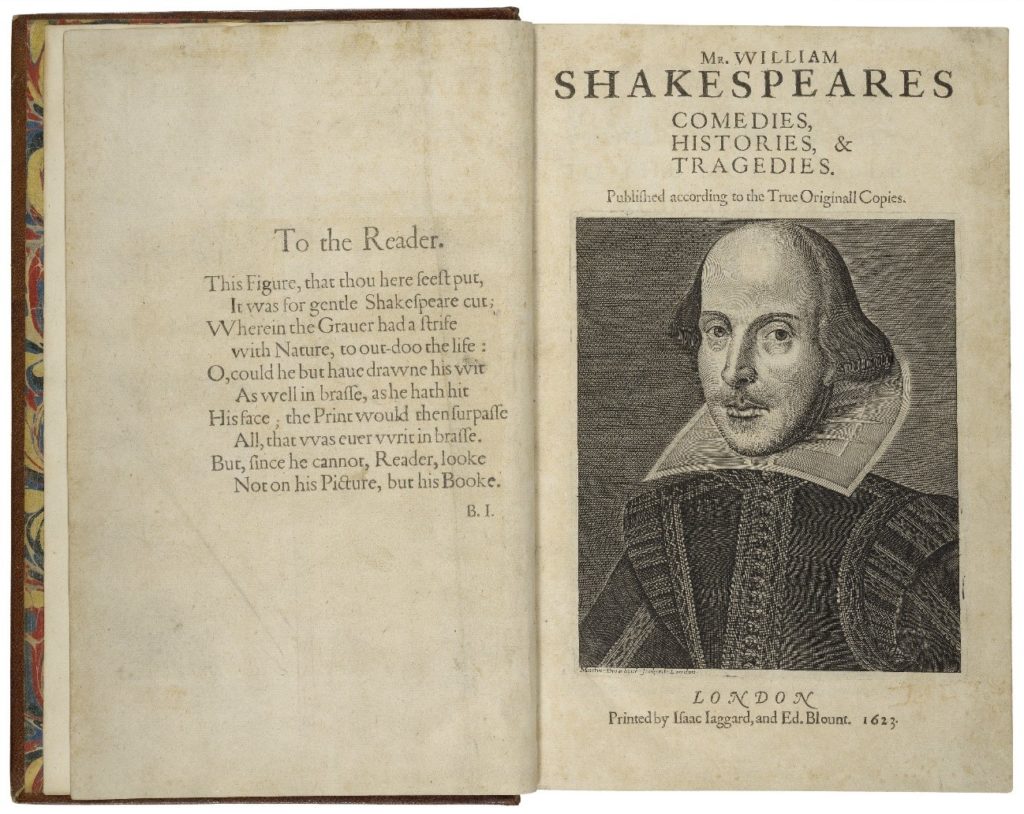
First Folio, 1623
[STC 22273 Fo.1 no.68, leaf [superscript pi]A1 verso || leaf [superscript pi]A1+1 recto (title page). Used by permission of the Folger Shakespeare Library under a Creative Commons Attribution-ShareAlike 4.0 International License]
This Figure, that thou here seest put,
It was for gentle Shakespeare cut,
Wherein the Grauer had a strife
With Nature, to out-doo the life:
O, could he but haue drawn his wit
As well in brasse, as he hath hit
His face; the Print would then surpasse
All that was ever writ in brasse.
But, since he cannot, Reader, looke
Not on his Picture, but his Booke
Ben Jonson’s opening poem in the First Folio contrasts art and Nature, with the latter standing for the authentic but absent original, represented with a “figure” (i.e. Shakespeare’s portrait) on the page next to it, produced with the technique of copper-plate engraving printed on paper. Next to this representation of his face, Jonson laments the fact that the author’s wit could not be reproduced with similar accuracy in visual terms and enjoins the reader to look upon the book instead, i.e. upon the text. As in Edgard’s address to his father in King Lear, printed paper is here a record for an individual’s mind—in this case, a reproduction of Shakespeare’s wit in absentia of the original. The presence of paper in the narrative and dramatic structure of King Lear, and in the larger context and processes involved in its material production and distribution, constitutes just one among the multitude of cases in which the fundamental role of paper—as matter and as trope—has gone largely unnoticed.
Paper and People in Motion
One of the chief objectives of the “Paper in Motion” work group is precisely to bring paper to the foreground by a close examination of its nature and its roles in a series of different practices, periods, and contexts. It does so as part of the PIMo project, which focuses on exile and displacement across the Mediterranean and beyond over the longe durée that goes from the end of the Middle Ages to the early twentieth century. The presence of Continental Protestant exiles in Elizabethan and Jacobean London, congregated around the different foreign churches licenced for worship by the crown, and the sort of exchanges of texts and ideas that they fostered, all contributed to generate a powerful intellectual and cultural seedbed. This background constitutes, in turn, the larger context for the proliferation of translators, publishers, printers, and the general emergence of a thriving market for intellectual and literary production in disciplines and practices that include theology, international law, political philosophy, as well as the production of recreational literature such as prose fiction, besides other formats for popular mass entertainment like the commercial stage. The names are too numerous to list here in much detail, so I shall only mention a few representative cases. The Sevillian Lutheran Antonio del Corro fled Spain and travelled all over Europe until he finally settled in Oxford, where he taught theology. He coincided there with another Protestant exile, the Italian Alberico Gentili (1552-1608), Regius professor of civil law and a pioneer in the discipline of international law. A prolific translator and the author of a Spanish Grammar for French and English learners, Antonio del Corro was also closely associated with another Sevillian Lutheran exile, Casiodoro de Reina, the author of the first translation of the Bible into Spanish (published in Basel in 1569), who was also for some time licenced by Queen Elizabeth to preach in London. The Pastor of the Italian Protestant congregation in London was Michelangelo Florio, a former Franciscan from Tuscany converted to Lutheranism who had got in trouble with the inquisition and fled to England. His son, John Florio, is the author of the first major Italian-English dictionary (Queen Anna’s New World of Words, 1611), and he penned a number of important translations into English. The latter included Montaigne’s Essays (1603), a text which had a significant impact in some of Shakespeare’s plays—there are traces, for instance, of Florio’s translation of Montaigne’s essay on the cannibals in The Tempest. That Florio was part of the literary milieu within which Shakespeare had thrived is demonstrated by the fact that his English Montaigne was published by Edward Blount, who was also responsible for Shakespeare’s First Folio. These are, in short, just a few samples that illustrate the vast and complex international networks of exiles that crisscrossed Europe at the time, and who took with them skills, texts, practices and ideas that in turn generated innovative doctrinal and intellectual developments wherever they crossed their paths. The hub that they created in Shakespeare’s London is just one among the innumerable cases that exemplify the entangled histories of paper, ideas and people in motion, their productive interaction, and their historical relevance.
José María Pérez Fernández is professor of English Literature at the University of Granada. He has published on topics which approach the intersection of comparative literature, cultural, and translation studies with subjects that include the international republic of letters and the early modern idea of Europe, as well as practices like diplomacy and the book trade. He is particularly interested in processes of communication in the early modern world—the paper revolution, the impact of print, and how financial and mercantile processes mirrored the ways in which information and knowledge exchange took place. In 2019 he joined the People in Motion COST Action as the leader of a work group on “Paper in Motion”. His book on Hernando Colón’s library (with E. Wilson-Lee) will be published by Yale in 2021. He has just joined the project for a critical edition of one of Hernando Colón’s most important catalogs, the so-called Libro de los Epítomes.


